After visiting the Harriet Tubman Underground Railroad National Historical Park, Shae, Truffles and I hopped in the car to see some sites from Harriet Tubman’s history.
The park has a driving tour map of the Harriet Tubman Underground Railroad Byway with the 45 sites you can see. Those sites are spread out around eastern Maryland and Delaware. For example, the Harriet Tubman Underground Railroad Visitor Center is in Church Creek at the bottom of the driving tour map, while other sites are an hour north in Greensboro.
The sites in Delaware are as far north as Wilmington which is two hours away from the visitor center. With more than 40 sites between those, it’s simply not feasible to see all of them in one day. We therefore set out to see as many as we could in the Church Creek/Cambridge area.
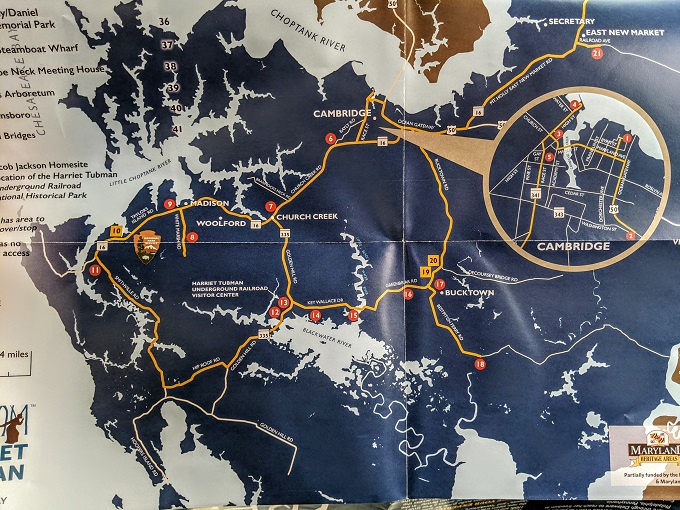
I recommend starting out at the visitor center (number 13 on the map) as that provides a lot more information about Harriet Tubman’s life and helps provide some context for what you’ll see later on.
You can get a map at the visitor center, or you can download one from the Harriet Tubman Byway website. There’s also an audio tour you can obtain here which you can listen to at each site.
We didn’t get to see anywhere close to all the sites, but here’s what we did manage to visit on the Harriet Tubman Byway.
Visitor Center
As mentioned earlier, we started off by visiting the Harriet Tubman Underground Railroad National Historical Park visitor center. That has lots of information about Tubman’s early life through to her brave missions to free enslaved people.
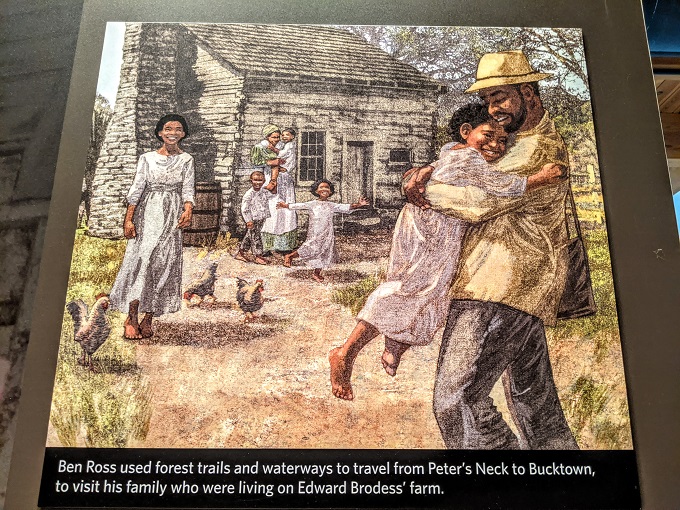
Bestpitch Ferry Bridge
The Bestpitch Ferry Bridge is the site of a former ferry over the Transquaking River. Ferry crossings were operated throughout the region by both free and enslaved African-American watermen who sometimes helped transport those seeking escape on the Underground Railroad.
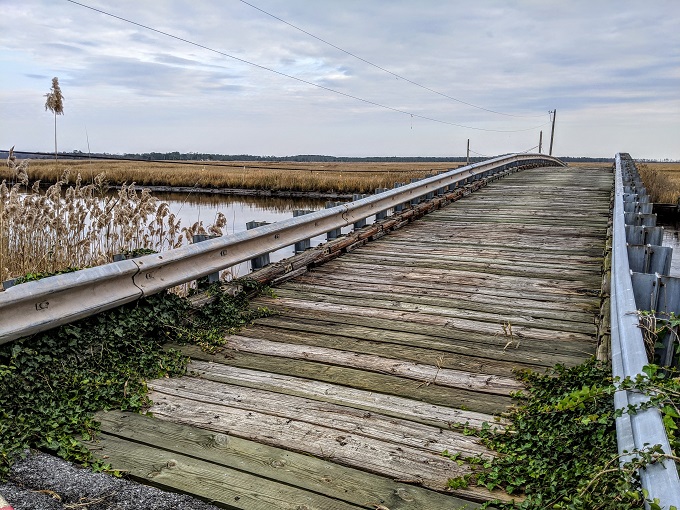
Bucktown General Store
When Harriet Tubman was an adolescent, she was hit in the head by a 2 lb weight while in this store. An overseer had thrown the weight at another enslaved person but missed and hit Tubman instead. Her head injury was so severe that she was knocked unconscious and ended up having headaches and seizures for the rest of her life.
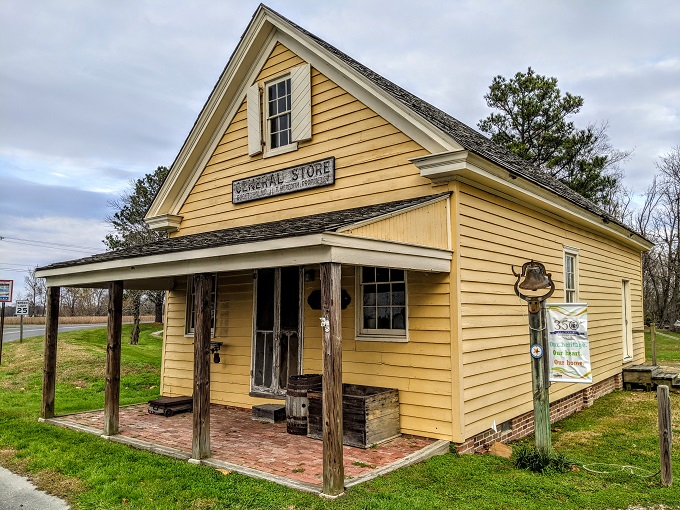
The store has been restored by its new owners and it seems like it’s possible to visit inside at times. The store was closed the day we visited, but we were able to peek in through the front door to see what it looked like inside.
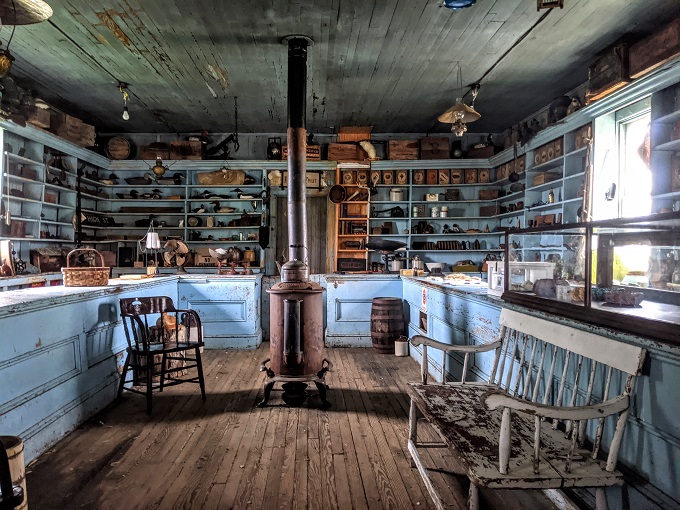
Brodess Farm
Harriet Tubman was enslaved by Edward Brodess and the site of their former farm is one of the stops on the byway. There’s not much to see now in terms of the farm as the building you can see in the distance in the photo below was built much later on.
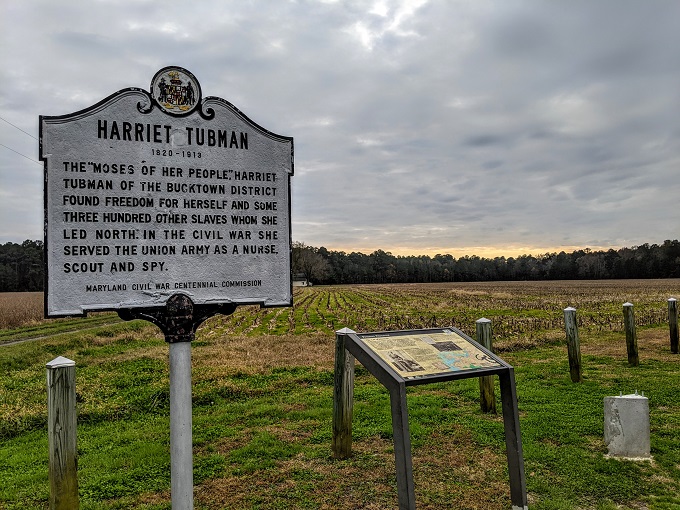
The site does have a historic marker though, along with an information board.
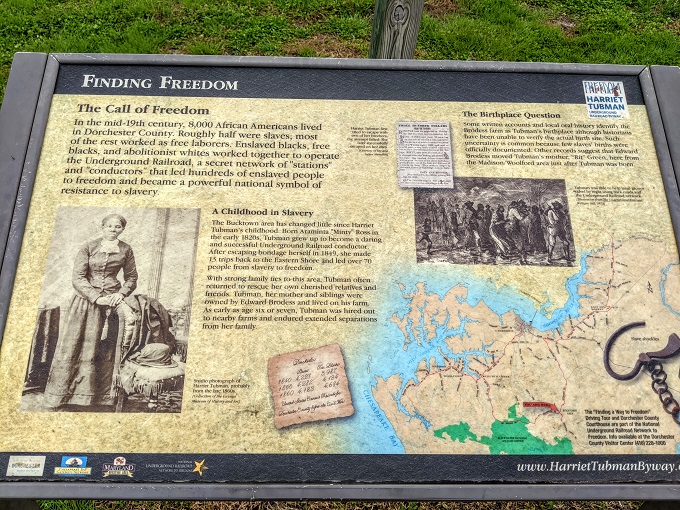
New Revived United Methodist Church
After the Civil War, four African-American churches were set up in the local area, one of which was the New Revived United Methodist Church where congregants still meet today.
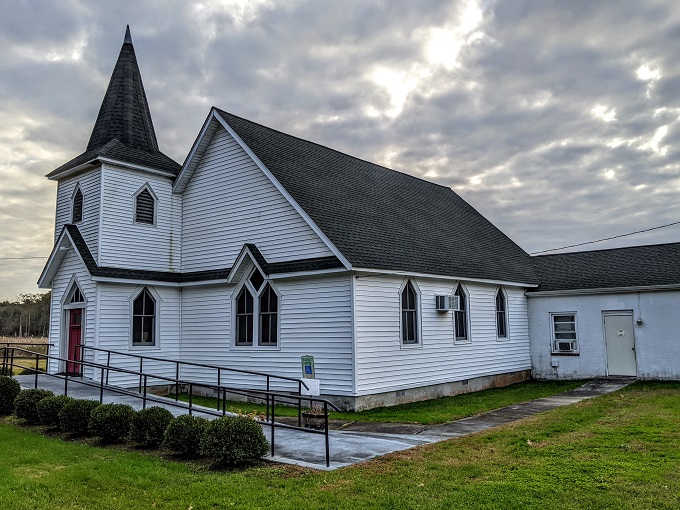

Malone’s Church
The first of those four churches to be set up was Malone’s Church. Services are no longer held in this place of worship, with the congregation merging with New Revived United Methodist Church.
Supporters of the church are working to restore the church building, as can be seen in the photo below.
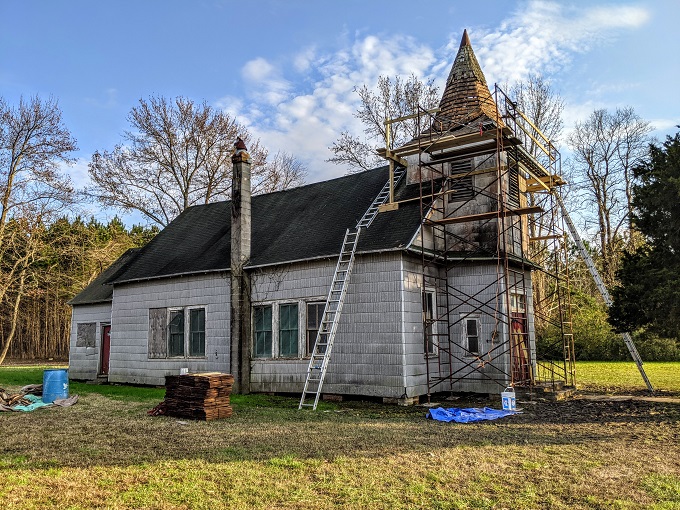

Stanley Institute
The Stanley Institute was once called the Rock School and was an African-American school which was built and run independently after the Civil War.
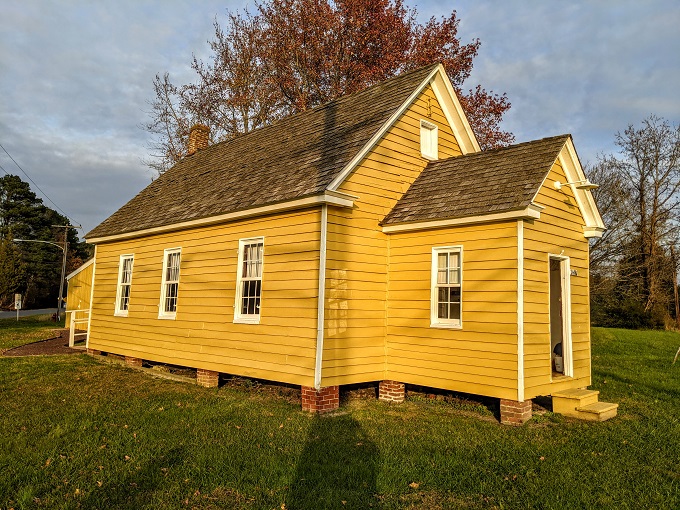
You can take a tour inside by appointment. We got lucky as a gentleman who runs the tours had seen another couple wandering around outside and so came across the street to show them around inside. Shae and I happened to arrive while he was doing that, so we got to take a quick look around too.
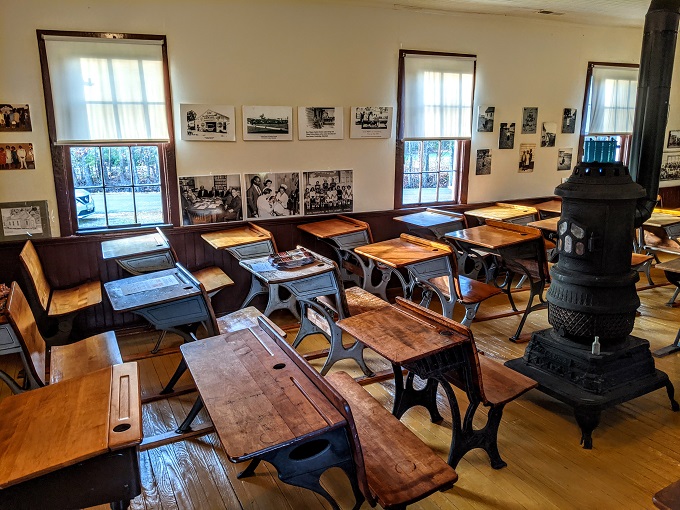

Harriet Tubman Museum
After visiting the Stanley Institute, we made our way to downtown Cambridge to wander around as there are a few sites there on the Harriet Tubman Underground Railroad Byway.
One of those was the Harriet Tubman Museum, but it was closed by the time we arrived.
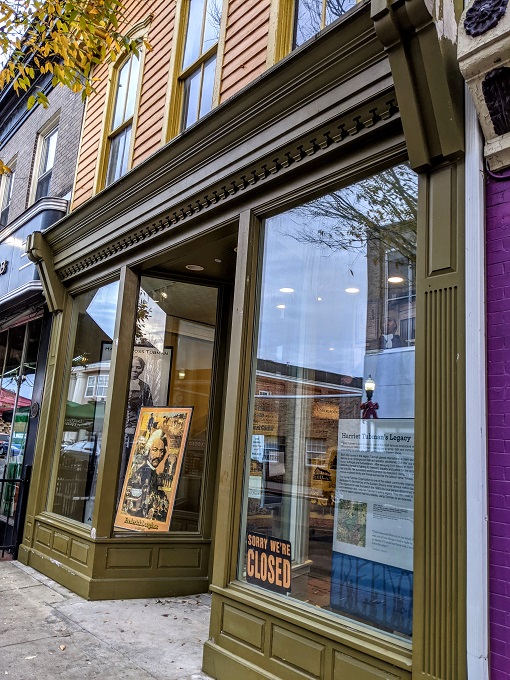
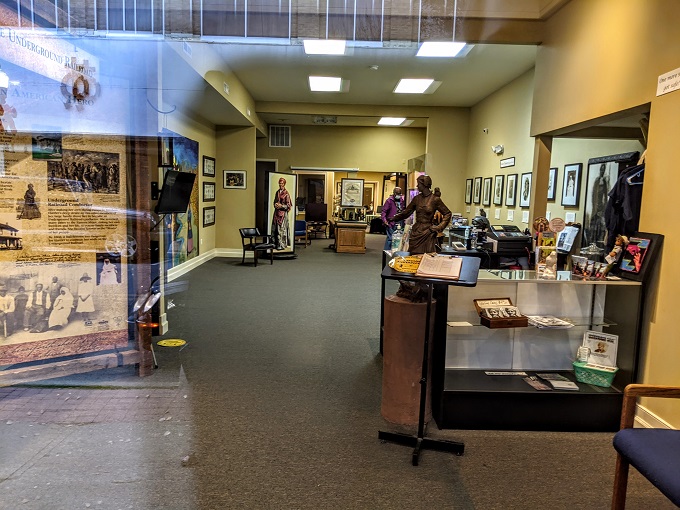
Dorchester County Court House
The Dorchester County Court House was the site of the daring escape of Harriet Tubman’s niece Kessiah and her two children.
The three of them were being auctioned off in front of the court house and Kessiah’s husband John Bowley (a free man) outbid everyone. When it came time to pay, John was nowhere to be seen, nor were Kessiah and their children. While other enslaved people were being auctioned off, the four of them had run away and eventually made their way by boat to Baltimore. Harriet Tubman met them there and helped lead them to Philadelphia.
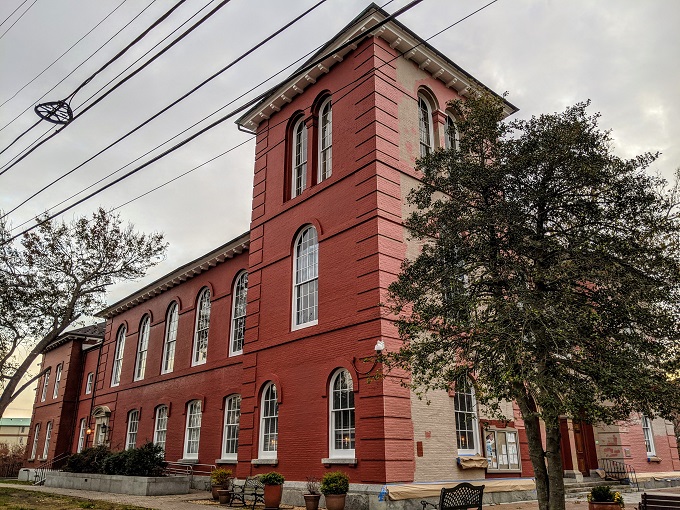
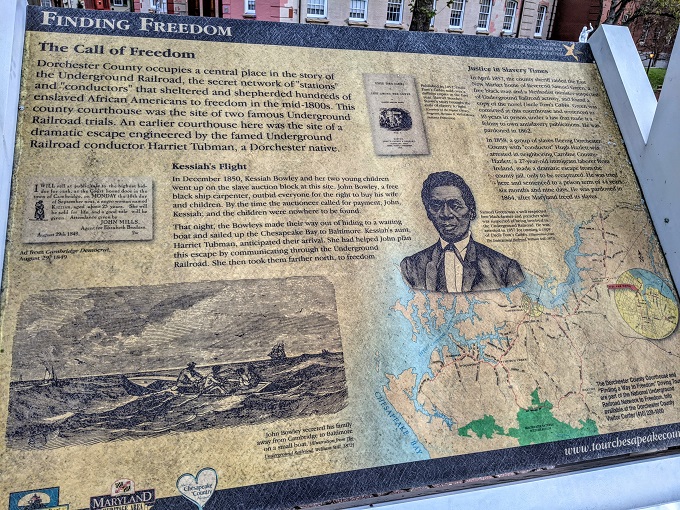
Harriet Tubman Mural
This mural isn’t listed on the driving tour map, but it’s on the back of the museum building in Cambridge. It’s an excellent piece of artwork by Michael Rosato and is relatively hidden away behind the museum and The Blue Awning gift shop; it’s definitely worth checking out though.
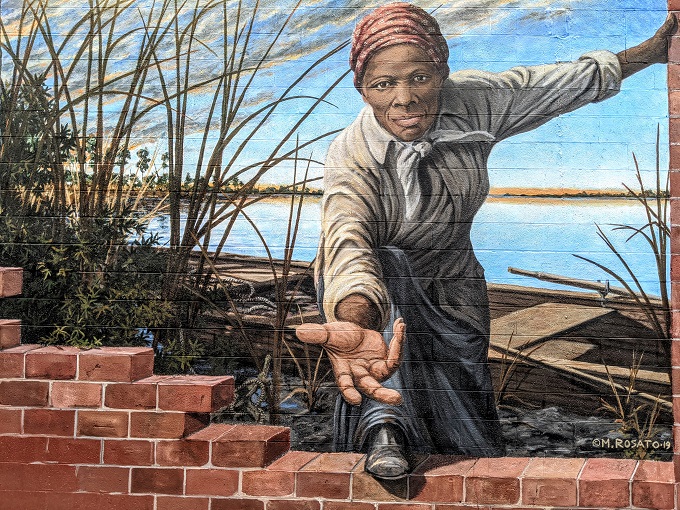
We happened to be visiting in the lead up to the holidays, so there was a creative Christmas tree in downtown Cambridge which paid homage to the importance of the seafood industry in the area.
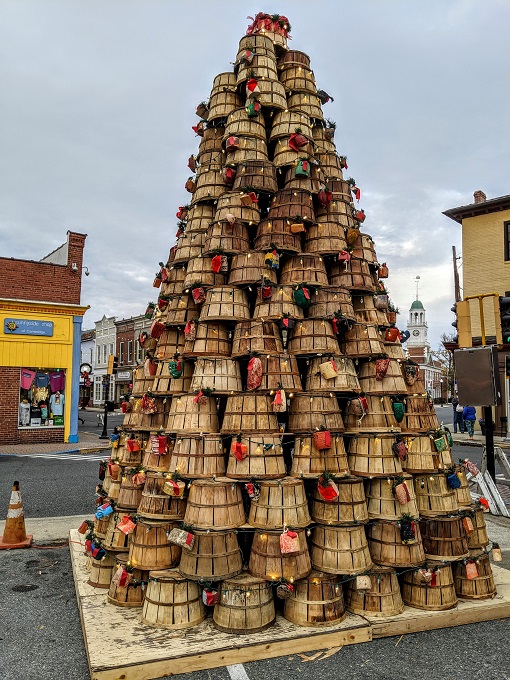
Final Thoughts
If you find yourself along the Eastern Shore of Maryland, we’d highly recommend stopping by the Cambridge area to visit the Harriet Tubman Underground Railroad National Historical Park, as well as seeing as much as possible on the Harriet Tubman Underground Railroad Byway. There’s so much to see and learn that it’s definitely worth making the time to do that.
[…] There’s a lot more to see in the local area relating to Tubman’s early life, so it’s worth setting aside some additional time to drive around to those sites. You can read more about the Harriet Tubman Underground Railroad Byway here. […]